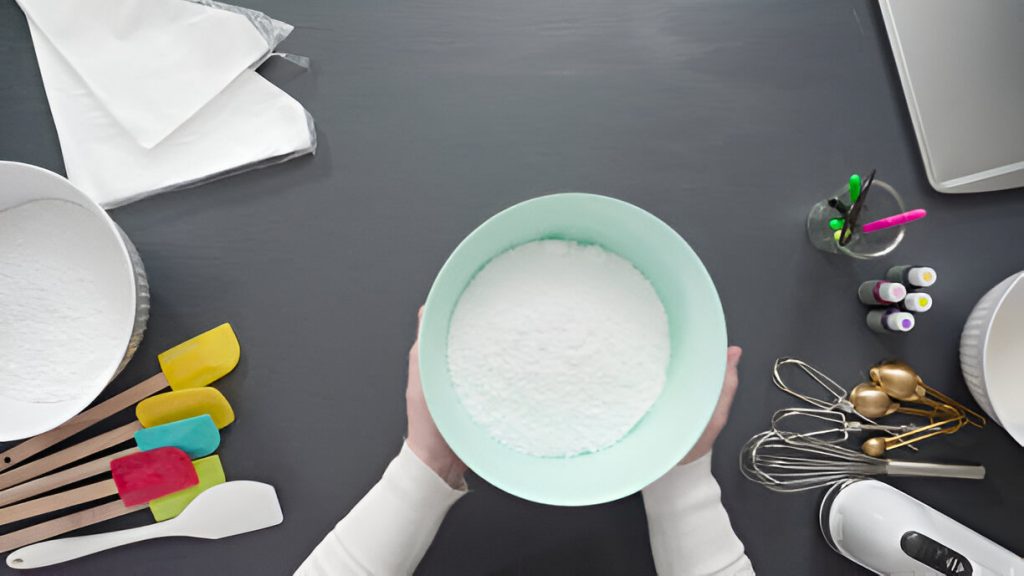Coffee creamer typically lasts about 2 weeks once opened. Factors like storage, type (dairy or non-dairy), and freshness indicators play a role. Check for changes in texture, color, smell, and taste. Dairy creamers might spoil faster than non-dairy options. Proper storage in the fridge for liquid or airtight for powdered creamer is key. Spoiled creamer can affect your coffee’s taste. By understanding these factors, you can enjoy your coffee creamer at its best.
Shelf Life of Coffee Creamer
When considering the shelf life of coffee creamer, it is crucial to understand the factors that influence its longevity and quality. Creamer expiration is a significant aspect to consider, with non-dairy creamers generally lasting longer than dairy-based options. Freshness indicators such as changes in texture, color, smell, or taste serve as crucial cues for determining the quality of the creamer. Proper storage plays a vital role in maintaining the freshness of creamer, with liquid creamers needing refrigeration once opened and powdered versions stored in airtight containers at room temperature. Ensuring the freshness of creamer is essential for long term use, as spoiled creamer can impact the flavor of your coffee negatively. By paying attention to expiration dates, monitoring for spoilage signs, and following appropriate storage practices, you can enjoy your coffee creamer at its best quality.
Differences Between Creamer Types
To understand the distinctions between various types of coffee creamers, consider the differences in shelf life and storage requirements for dairy and non-dairy options. When choosing between dairy and non-dairy creamers, flavor preferences play a significant role, with dairy creamers often offering a richer taste due to the use of milk or cream, while non-dairy options cater to those with lactose intolerance or dietary preferences. Ingredient differences are apparent, as dairy creamers contain milk or cream, while non-dairy creamers rely on vegetable oils, sugars, and additives like gellan gum for stability. Nutritional content varies, with dairy creamers providing calcium and protein, and non-dairy creamers being lower in calories and cholesterol. Environmental impact can differ, as dairy production has a higher carbon footprint compared to plant-based alternatives. Brand popularity may influence your choice, with well-known brands offering a wide range of options to suit different preferences.
Storage Recommendations for Creamer
For optimal freshness and quality, ensure proper storage of your coffee creamer to maintain its flavor and extend its shelf life. Proper refrigeration is key for liquid creamers, whether dairy or non-dairy, especially after opening to prevent spoilage. Liquid dairy creamer should be stored in the refrigerator at 33F to 40F and consumed within 7-10 days after opening. Non-dairy liquid creamer also benefits from refrigeration for up to 1-2 weeks post-opening. Powdered creamers, on the other hand, can be stored at room temperature in airtight containers to maintain their freshness and flavor. Airtight containers help in flavor preservation and spoilage prevention by keeping moisture and contaminants out. When storing your creamer, avoid exposure to direct sunlight and heat sources, as these can degrade the quality of the product. By following these storage recommendations, you can enjoy your coffee with the perfect creaminess and flavor every time.
Signs of Creamer Spoilage
How can you easily identify signs of spoilage in your coffee creamer? To ensure your creamer is fresh and safe to use, pay attention to key spoilage detection methods. Firstly, check the expiration date on the packaging as an initial indicator of freshness. Next, visually inspect the creamer for any curdled texture, clumps, or unusual color changes, which may suggest spoilage. Additionally, give the creamer a sniff to detect any sour or rancid odors that could indicate deterioration. When tasting the creamer, watch out for any sour or bitter flavors, as these are signs of potential spoilage. It is crucial to discard creamer showing signs of mold, damaged packaging, or an unusual appearance to prevent any negative impact on the quality and taste of your coffee. By actively monitoring the shelf life awareness and following these spoilage detection methods, you can enjoy your coffee with fresh and safe creamer.
Extending Creamer Shelf Life
Easily identify signs of spoilage in your coffee creamer by actively monitoring its shelf life and following key detection methods. When aiming to extend the shelf life of your creamer, freezing techniques can be beneficial. Freezing can preserve freshness for longer periods and is particularly useful for bulk purchases. Proper long-term storage is crucial for quality maintenance. To maintain flavor retention, consider transferring creamer to airtight containers or freezer bags before freezing. Ensure to leave room for expansion, seal tightly, and label containers with freezing dates. When thawing frozen creamer, do so in the refrigerator and stir or shake well after thawing. It’s essential to use the creamer within the recommended time frame and check for any changes in texture or flavor. If you prefer alternatives, powdered creamer can be a good option, or you may consider smaller containers, non-dairy alternatives, homemade creamer, or purchasing refrigerated creamer in smaller quantities.
Detecting Spoilage in Creamer
To determine if your coffee creamer has spoiled, observe for any changes in texture, smell, or taste. Detecting spoilage in creamer is crucial to ensure your coffee tastes great and remains safe to consume. Here are some key indicators to look out for:
- Texture Changes: Check for any curdling, clumps, or unusual consistency in the creamer.
- Visual Cues: Look for any mold growth, discoloration, or separation in the creamer.
- Smell Test: Sniff the creamer for any sour, rancid, or off-putting odors.
- Taste Test: Sample a small amount of the creamer to detect any sour, bitter, or off flavors.
Spoiled creamer can negatively impact the flavor of your coffee and may pose health risks if consumed. By paying attention to these signs of spoilage, you can ensure that your coffee creamer is fresh and safe to use.
Dairy Vs. Non-Dairy Creamer Comparison
When comparing dairy and non-dairy creamers, it is essential to consider their shelf life and storage requirements for optimal freshness and quality. Both types have distinct characteristics that cater to different preferences and needs. Here is a comparison table highlighting key aspects of dairy and non-dairy creamers:
| Aspect | Dairy Creamer | Non-Dairy Creamer |
|---|---|---|
| Flavor Preferences | Creamy and Rich | Varied flavors such as Hazelnut, Vanilla |
| Nutritional Differences | Contains Dairy, Fat, and Cholesterol | Typically Lower in Calories and Fat |
| Environmental Impact | Requires Refrigeration, Dairy Production | Often Plant-Based, May Have Sustainability Certifications |
| Health Considerations | May Cause Lactose Intolerance, Allergies | Suitable for Vegans, Lactose-Free Options |
| Cost Comparison | More Expensive, Price Varies by Brand | Generally More Affordable, Various Options Available |
Considering these factors can help you choose the creamer that aligns with your taste preferences, dietary restrictions, and environmental values. Whether you opt for the creaminess of dairy or the plant-based alternatives, proper storage and timely consumption are key to enjoying your coffee at its best.
Using Expired Creamer
Moving onto the topic of expired creamer, understanding the implications of using coffee creamer past its expiration date is crucial for maintaining quality and safety standards. Here are some key points to consider when deciding whether to use expired coffee creamer:
- Flavor Impact: Expired creamer can develop a stale or off taste, affecting the flavor of your coffee or tea.
- Health Risks: Consuming expired creamer may expose you to potential health risks due to the breakdown of ingredients over time.
- Bacterial Growth: Expired creamer can be a breeding ground for harmful bacteria, leading to foodborne illnesses.
- Digestive Discomfort: Using creamer past its expiration date may result in digestive issues like stomach upset or discomfort.
Using expired creamer not only compromises the taste of your beverage but also poses risks to your health. To ensure a pleasant and safe drinking experience, it is best to adhere to the expiration dates provided on the creamer packaging and discard any creamer that has passed this date to avoid potential issues related to flavor, health, bacterial contamination, digestive problems, and overall quality changes.




